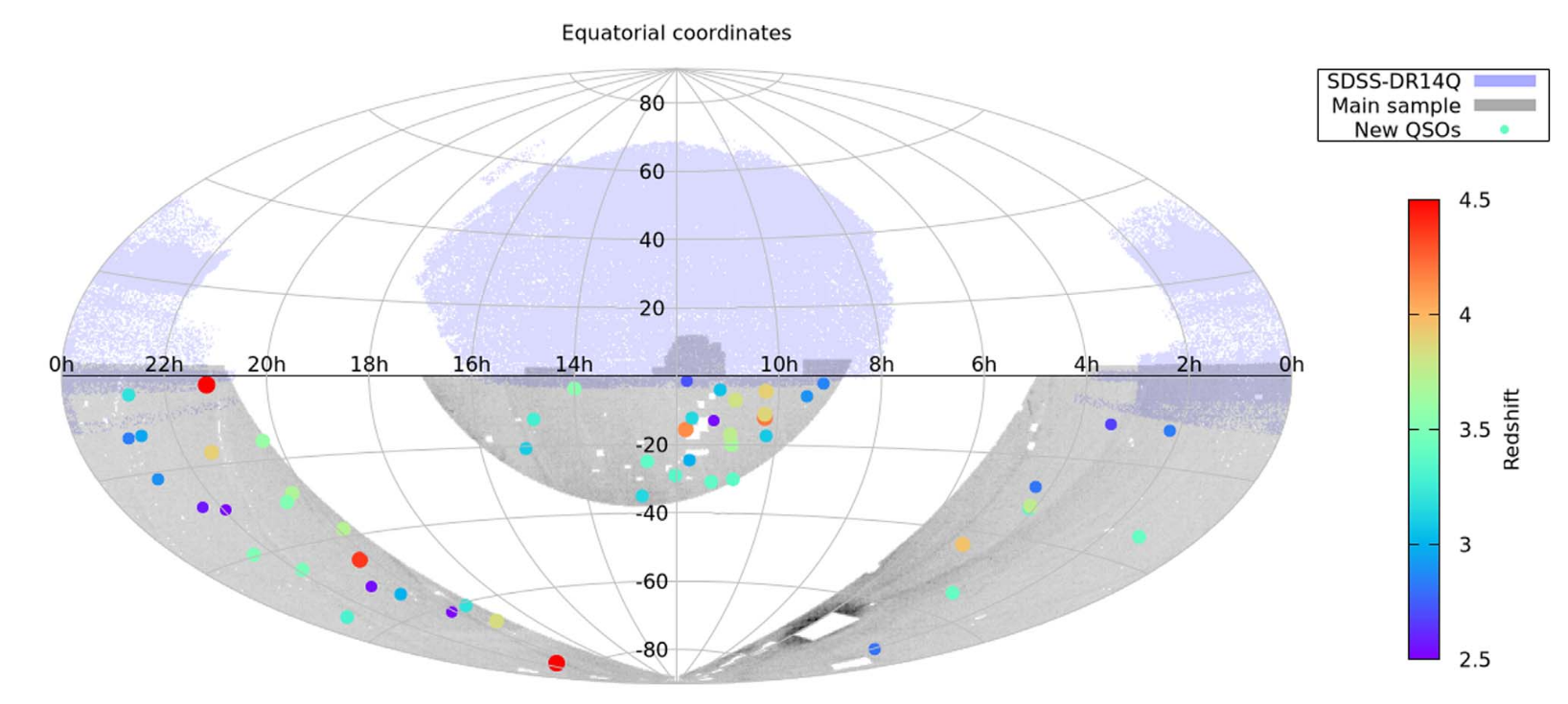How students at TNG helped in searching for the Brightest Cosmic Beacons in the Southern Hemisphere
Quasi-Stellar Objects (or QSO) are very interesting objects allowing us to study how matter accretes on black holes and how such accretion interacts with the host galaxy evolution. Thanks to their high luminosities, high distances from us, and ubiquitous presence in the Universe, they can also act as "cosmic beacons" which brighten the intervening material located between the QSO itself and the observers on Earth.
Inter-Galactic Medium (IGM), in turn, reveals its presence by absorbing a fraction of the QSO light at specific wavelengths, so that the observed spectrum is populated by thousands of dark absorption lines. The study of such "forests" of lines allows us to infer the physical properties of the IGM, which would otherwise be incomprehensible.
For historical reasons, the identification of the brightest QSOs focused mainly in the Northerh hemisphere. However, the most advanced spectrographs aimed to study the absorption line forest are actually located in the Southern hemisphere (e.g. UVES, ESPRESSO at VLT), hence the need to identify new bright and high-redshift QSOs in the South.
As you may have guessed from the name, "quasi-stellar", the search for new QSOs is not an easy task since they resemble ordinary stars. You need either a (very time consuming) spectroscopic campagin to identify them, or some good idea to identify such "needles in a haystack".
A group of astronomers in Trieste (Italy), assisted by colleagues in Padua, Chile and Germany, tried to face this task by implementing a QSO candidate selection algorithm based on the so-called Canonical Correlation Analysis (CCA) technique. The whole endeavour has been dubbed QUBRICS, acronym for "Quasar BRIllanti per la Cosmologia nell’emisfero Sud", i.e. bright quasars for cosmology in the Southern Hemisphere.
 Figure shows the location of the formerly known QSOs in the North (in blue), the location of the sources screened by the selection algorithm (gray) and the 54 newly identified QSOs (colored circles). The success rate in identifying new QSOs has been ~80%.
Figure shows the location of the formerly known QSOs in the North (in blue), the location of the sources screened by the selection algorithm (gray) and the 54 newly identified QSOs (colored circles). The success rate in identifying new QSOs has been ~80%.
A preliminary test of the reliability of the predictions of the algorithm took place in June 2019 at Telescopio Nazionale Galileo where 3 new QSOs were discovered (over a total of 4 QSO candidates) using the low-medium resolution spectrograph DOLORES installed at the focus B of TNG. The observations have been carried out by two very young astronomers, Vittoria Altomonte and Andrea Cama, winners of the 2019 italian edition of "Olimpiadi di Astronomia". The young winners spent some hours as astronomers at Telescopio Nazionale Galileo where they carried out the observations under the supervision of G. Calderone (INAF - Osservatorio Astronomico di Trieste), G. Andreuzzi and M. Pedani (astronomers at TNG).
The results obtained at TNG allowed astronomers to further optimize the algorithm, and identify the final list of 1476 QSO candidates in a sample of more than 1 million sources.
Further observations were carried out in late 2019 using the Magellan telescopes (Las Campanas Observatory) and ESO-NTT (La Silla) and allowed astronomers to identify a total of 54 new, bright (magnitude in i-band < 18) and high-redshift (z > 2.5) QSOs in the Southern hemisphere.
Details are available in: https://ui.adsabs.harvard.edu/abs/2019ApJ...887..268C/abstract

